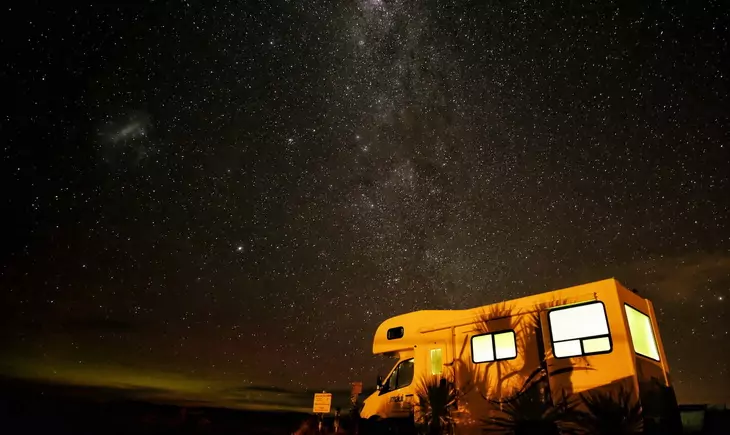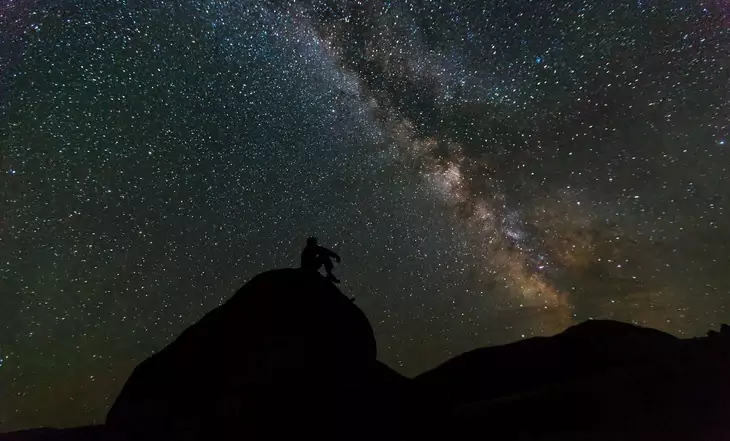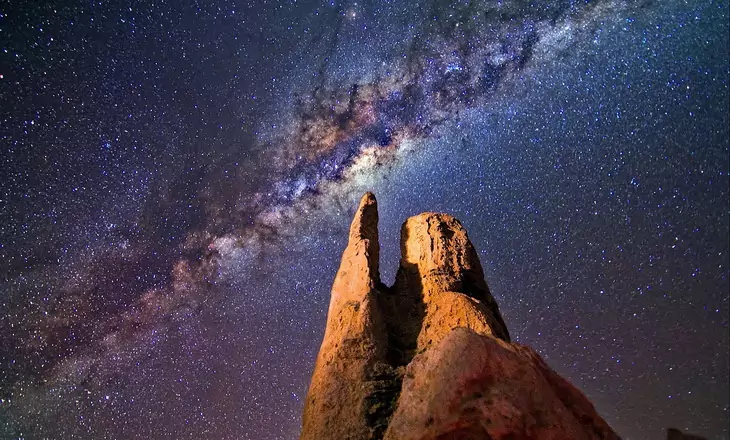Our ancient ancestors figured out the mysteries of the stars long before any technological advancements that have made modern life so easy. As early as the 7th century BC, or about 2,700 years ago, ancient Grecian myths and stories account for a number of recognizable constellations. These same constellations are recognized (and utilized) even today. Sailors and early explores heavily relied on the position of the sun and stars to navigate their ships. Early philosophers, poets, scientists and mathematicians looked to the stars for answers.
Pythagoras was the first to write a proof for his defining mathematical theory using the stars. Plato wrote a book speculating early on about the rotation of the planets and the Earth. Ptolemy published a book on the order of the planets in their special relation to the sun, the very same order which was recognized and used until recently, when Pluto was demoted from planetary status.

Star navigation can be a life saving skill if you find yourself lost after dark. If you are lost without a compass, GPS, or other navigation system, if you know how to read the stars, you can navigate back to safety with the oldest method known to man. As you learn to read the night sky, you will learn how to find your way, no matter where you are.
Expect the Unexpected
As you head out into the wilderness, you always want to be prepared. However, the unexpected expectedly seems to happen more often than not. Perhaps you’ve run out of batteries for your headlamp, your phone battery died, you need to alter your night hike, or whatever the reason may be, if you find yourself out at night, knowing how to get to your destination without the use of any devices can potentially be life saving. Relying on the stars for navigation will be your most reliable source, you don’t have to worry about malfunctions or battery life!

Always know which direction your starting point is, or the nearest safe spot. If it’s your campsite or car, always know which direction you started from. I.e. if you set out toward the setting sun, this means you are walking westward. If you need to return to your starting point, you need to head east. Your situation will often be a bit more complicated than that, as you probably are not walking true to one direction your entire hike, but it can still give you a general direction to head back to. See our piece on the best survival watches to ensure that you always stay safe on the trail.
Hemispheres and Seasons
Reading the stars is a bit more complicated than reading a book. As the Earth rotates on its axis, the stars appear as if they move across the night sky, sometimes making it hard to memorize where you will see the telltale constellations. As the Earth orbits the sun, changing with the seasons, the location of the constellations in the sky will change with the seasons as well. Some stars are only visible during winter or summer, some are only visible for a short time before the sun reappears.
It can be difficult learning to read the sky if you aren’t familiar with any of the constellations. Here, we suggest a number of ways to get you started in recognizing some of the more easy to spot constellations.

Let’s first go over a couple strategies for navigating by the stars, regardless of where you are, what season it is, and even if you don’t know a single name of a constellation or star in the sky. Again, you do not have to be familiar with the constellations in these first two methods in order to navigate by the stars.
Methods to navigate by the stars
Two Sticks Method
This method can be a bit more time consuming and requires scavenging for some materials, so you’ll have to be patient. It will, however, work no matter where you are in the world.
- Chose a bright star in the sky. One that you can pick out again. Some stars may have a slightly different color to them than the rest, or can easily be set apart from the others. It doesn’t matter which star you choose, just so long as it’s one that is a bit closer to the horizon, and not the North Star, or Polaris. Polaris gives off the illusion that it is unmoving, and for this method, you need to watch the stars move. More information on Polaris will be explained later.
- Find two sticks (or something similar) one that is a bit taller than the other. Aim for finding one that is roughly 2 feet, and another that is roughly 3 feet in length.
- Line the sticks up with the chosen star. The shorter stick will be in front, closer to you. Push the sticks in the ground, keeping them as straight as possible. You want to make a line from the top of the sticks to the star, with your eyes being level with the shorter stick.
- Ensure that you don’t lose track of the star, and wait as it “moves.”
- Follow the movement of the star. This will take anywhere from 10 minutes to 30 minutes to get an accurate reading.
- Now to determine what direction you (and the lined up sticks) are facing. To us on Earth, the sky appears to move from east to west (though in reality, it’s the Earth that is moving, not the stars).
- If your star moves upwards, you’re facing East.
- If your star lowers, or goes below the line of the sticks, you’re facing West.
- If the star moves left of the sticks, you’re facing North.
- If the star moved to the right of the sticks, you’re facing South.
- If the star moves two directions, such as down and to the right, you’re facing South West.

Crescent Moon Method
This method is useful only if you have difficulty identifying the constellations, and only if there is a crescent moon in the night sky. The moon will look appear in a crescent shape (sometimes referred to as a ‘fingernail moon’) in both the waxing and waning phase, as it is closer to the sun. The moon appears full during its orbit when it is closest to the sun, which is why we have a full moon about once every month.
The crescent shape is only present in the night sky before and after a full moon, for about a week as it either orbits away from or approaches the sun. If the moon is too close to a full moon, this method will not be possible to find your direction.
- Find the two very distinguishable points of the crescent moon.
- Draw an imaginary line with your hand or use a long, straight stick to the horizon, from the top point of the moon, to the bottom point, and finally to the horizon line.
- Where your hand (or stick) meets the horizon on this straight line, that is South if you are in the Northern hemisphere, or North if you are in the Southern hemisphere.
- If you are in the Northern hemisphere, looking right at that point is South. Your right will be West, left, will be East, and behind you, will be North.
- If you are in the southern hemisphere, looking at the spot on the horizon is North. Your right will be East, left, will be West, and behind you, will be South.

Locating Polaris
This is the more traditional method for navigating by the stars. Finding Polaris, one of the brightest stars in the sky, will point you in the direction of true north. It is situated almost directly in line with the celestial North Pole. It is only visible in the northern hemispheres. In Southern hemispheres, you can use a similar method of star navigation with a different constellation. Read on in the Locating Crux section for southern hemispheres.
- North Star: The North Star, or Polaris, is the last star on the tail of the Ursa Minor, known also as the Little Dipper or Little Bear constellation. In the Northern hemisphere, this star gives off the illusion that it stays in the same spot throughout the night as it is only one degree off from being directly above the north pole, while you can clearly see other constellations rotate across the sky. In the southern hemisphere, you cannot see Polaris any time of the year. To find Polaris, sometimes it is easier to first identify the Big Dipper, or Ursa Major. It’s a similar looking constellation to the Little Dipper, except it is much bigger and sometimes easier to spot on an especially starry night. Identify the ‘ladle’ of the Big Dipper, it will be four stars that make an almost trapezoidal shape. Find the top right corner, the star farthest away from the tail or the ‘handle’ part of the ladle. From there, you should be able to look upwards, drawing an imaginary line from the corner of the Big Dipper to Polaris. Polaris will be the last star, and the brightest, in the Little Dipper constellation. The Little Dipper has three stars that make the tail, or the handle of the ladle. The last star on the tail is Polaris, or the North Star. Once you’ve identified the North Star, draw a straight line down to the horizon. The point on the horizon is North. Behind you is South, the west will be on your left and the east will be on your right.
- Spring Up and Fall Down: Memorize this little saying, Spring up and fall down to help you remember where in the sky you can find Ursa Major or the Big Dipper. For the warmer half of the year, or in the spring and summer, it’s located high up in the sky. In cooler months, or in the fall and winter, it will be lower in the sky, closer to the horizon. This can help you save time when you’re searching the night sky for the telltale stars.

Locating Crux
Crux, otherwise known as the Southern Cross, is a constellation of five stars that align in the shape of a cross. Australian Aborigine tribes would use the Southern Cross to navigate at night. They called it The Emu of the Sky. Identifying the Southern Cross will point you in the direction of true South.

The Southern Cross constellation is visible year round in the southern hemisphere, and visible during the summer months at the equator and in regions just above the equator, for the summer months.
Southern Cross
First, identify the four characteristic stars. The two brightest and biggest stars make up the vertical length of Crux. Using your finger or another object, measure the length between the top and bottom stars by fully extending out your arm and marking the length. Then, from the bottom star known as Acrux, go about five times the length of the constellation.

Keep your arm straight so you can accurately determine the distance. At the point that is five times the length away from Acrux, draw a line straight down to the horizon. That spot on the horizon is south. North is behind you, east will be on your left and west will be on your right.
Stargaze for Safety
Take a few minutes out of your nightly routine to go outside. Practice locating the helpful constellations on your own time, when you aren’t in an emergency situation. Bring a compass, outside with you and observe. Watch how some constellations move across the sky over time. Look at which way they move as time passes by using the compass to help you. Our article on how to use a compass will help you learn this navigation tool, so check it out.

Consider investing in a book about constellations, printing out a star chart, or just doing some simple research. The more familiar you are with some of the more easily observable constellations, such as Orion, Gemini, the Big Dipper, the Little Dipper, or the Southern Cross, identifying these constellations will become second nature. Learn to spot some of the planets that have characteristically identifiable colors such as Mars, which looks like a fiery red star, or Venus, which is ultra bright and looks pure white.
The Take Home Message
One final tip for navigating by the stars is to pick a point on the horizon, if possible. If you are in a thickly wooded area, this may be a bit hard to do. However, if it is possible, find an oddly shaped tree or some other definitive object on the horizon as a destination point. If you are trekking out at night, check your direction periodically by employing one of the above methods to ensure you haven’t strayed from your path or planned direction. For more tips on how to survive in the wild, see our previous article on this all-important topic.
We cheer for adventure and are major proponents of encouraging people to enjoy the beautiful outdoors. Observing the night sky in all its beauty, the planets and infinite stars is one of the many ways to experience nature. After all, the word planet is derived from the Greek word for ‘wanderer’, and we hope you are inspired to do some wandering on your own.
To learn more about hiking at night, read our article for your safety.

We hope that you found our article to be informative and that you will share it on social media so that more people will familiarize themselves with these simple techniques on how to navigate by the stars. If you have some questions, or have any tips of your own, feel free to leave them in the comments section below. We will attempt to answer your questions or concerns as soon as we can. Thanks for reading!








I have always had a fascination for stars and I have quite invested in star gazing and learning about stars. Am also a seasoned hiker and in one of my hiking trips I had the misfortune of losing my compass. I was however lucky that I was hiking in the open Savannah therefore I could clearly see all the stars. The fingernail moon was out that night and I established the two distinguishable points of the crescent. Using a long straight stick I drew an imaginary line from the top point of the moon to the bottom point of the moon and finally to the horizon. I knew I was in the south and when the stick met the horizon I knew I was in the north as I was in the south my right was east and my left was west. I thus found my direction.
Navigating by the stars is not simple, but it is definitely achievable. All you need are reliable guidelines, and that’s precisely what we have provided you with.
There was this time I had gone hiking and my compass fell down a crevice in the rocks. I had not carried a GPS with me and my watch could not tell direction. I am an avid stargazer and each night before I went to sleep I always did some stargazing. I was also conversant with the two stick method of checking direction of stars looked for two sticks one about 2 feet and the other 3 feet tall. I pushed them into the ground with the shorter stick in front and closer to me. I followed the movement of the star for about twenty minutes. The star moved two directions down and to the right and I knew I was facing southwest.
Stargazing is fun; along with the info I have provided, you should think of a top-quality telescope, dive into maps and guide books, keep an astronomy diary, and seek out other avid stargazers.